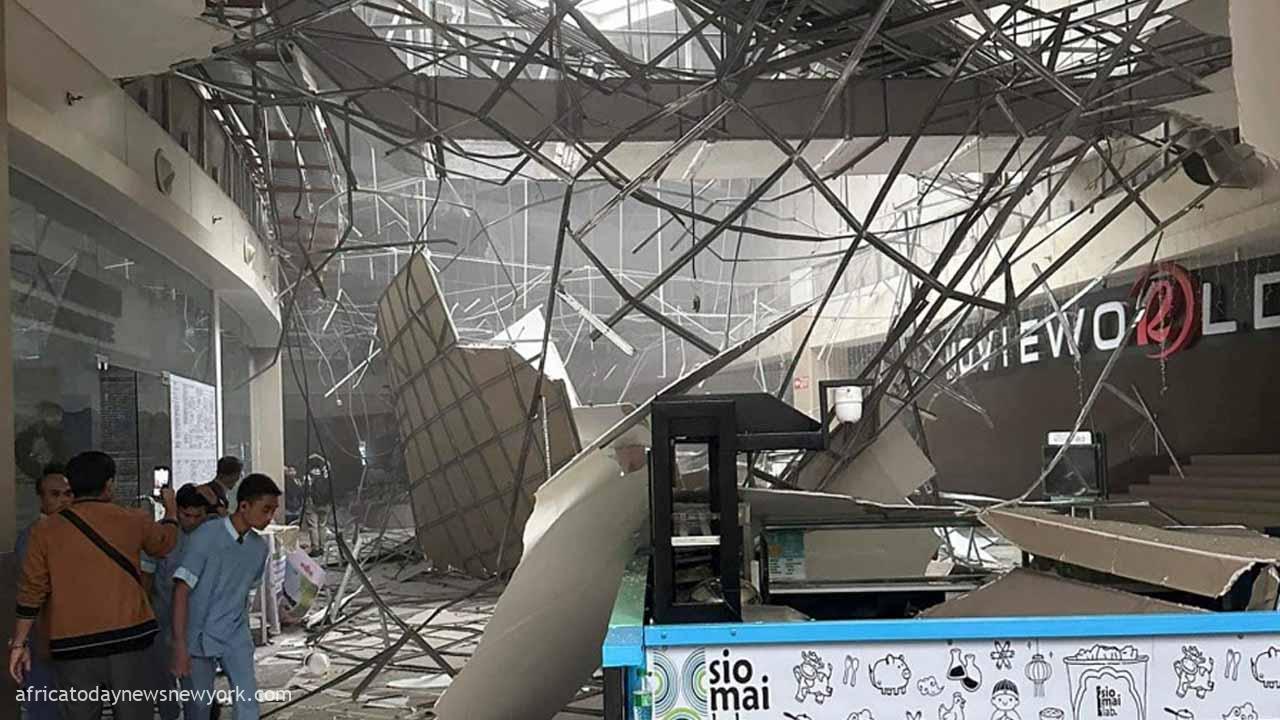The US Geological Survey has announced that a strong magnitude 6.7 earthquake shook the southern Philippines, sending people fleeing buildings and causing part of a ceiling inside a shopping mall to collapse.
No tsunami threat was issued after the quake struck off Sarangani province on the main southern island of Mindanao at a depth of 78 kilometres (48 miles) at 0814 GMT, the USGS said in a statement which was sighted by Africa Today News, New York.
There were no immediate reports of casualties but the quake was felt across a wide area of the mountainous island.
‘I think it was the strongest earthquake I’ve ever experienced,’ Keeshia Leyran, 27, told reporters from Davao City, about 200 kilometres (124 miles) from the epicentre, where she was attending a conference.
‘People around me were panicking and running to go outside. There are hundreds of people here at the event, so I was more scared of a stampede happening to be honest.’
A photo shared on Facebook and verified by AFP showed a collapsed ceiling inside a shopping mall in General Santos City, less than 100 kilometres from the epicentre.
Read Also: At Least 132 Confirmed Dead Following Earthquake In Nepal
About 30 students at a high school in the city were treated for breathing difficulties due to panic following the quake, said Adrian Imbong, an emergency medical services worker.
Sarangani municipality police officer Captain Giecarrjune Villarin said the quake was ‘really strong’.
He and his colleagues fled their building on the island, which is about 30 kilometres southeast of where the quake struck.
‘We saw people run out of a nearby gym where they had been playing basketball,’ he said.
‘We have not received any reports of damage or casualties.’
Raquel Balaba, 58, was with her grandchildren at a primary school in General Santos City when they felt the ground move.
Africa Today News, New York reports that Quakes are a daily occurrence in the Philippines, which sits along the Pacific “Ring of Fire”, an arc of intense seismic as well as volcanic activity that stretches from Japan through Southeast Asia and across the Pacific basin.

